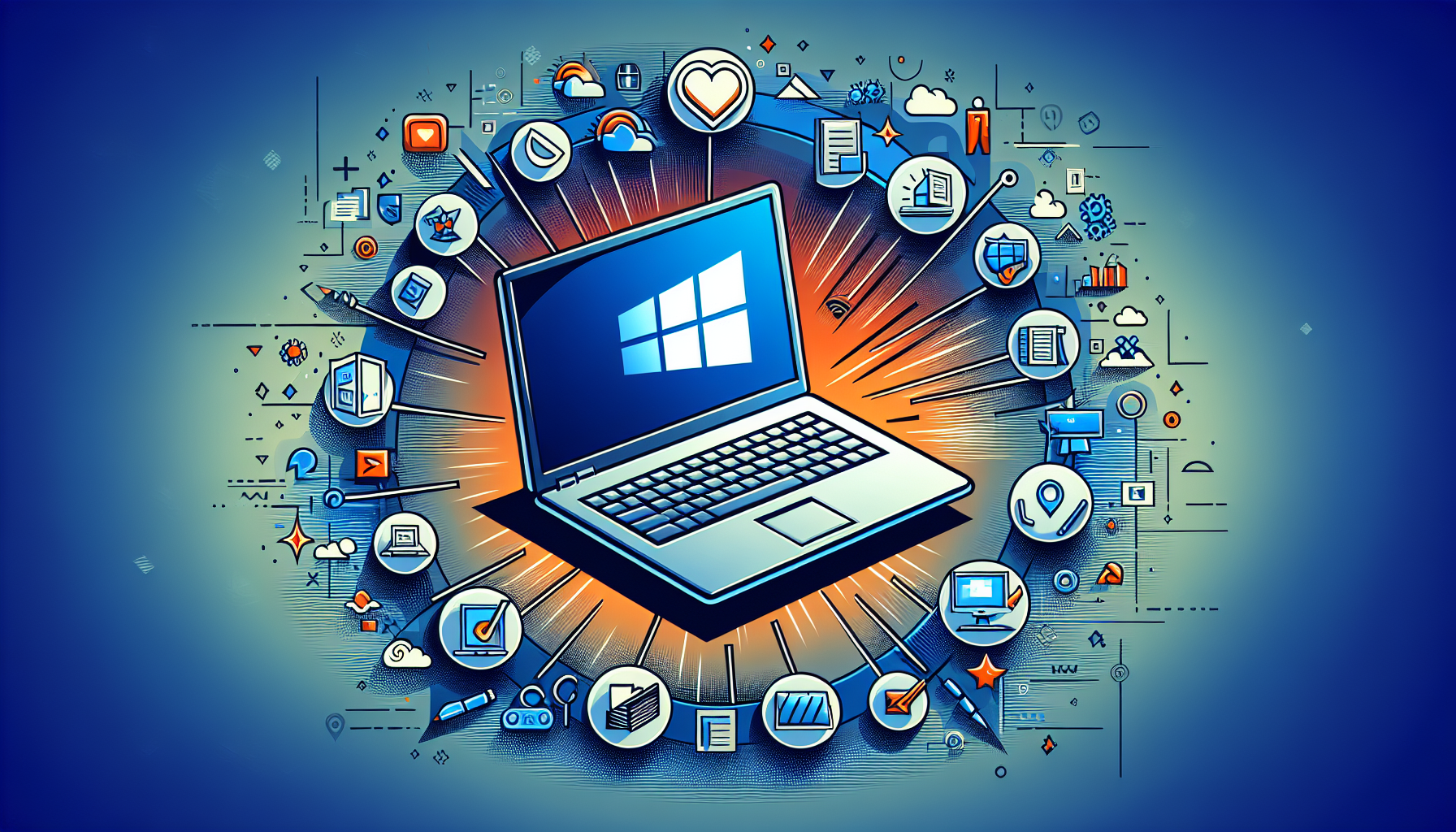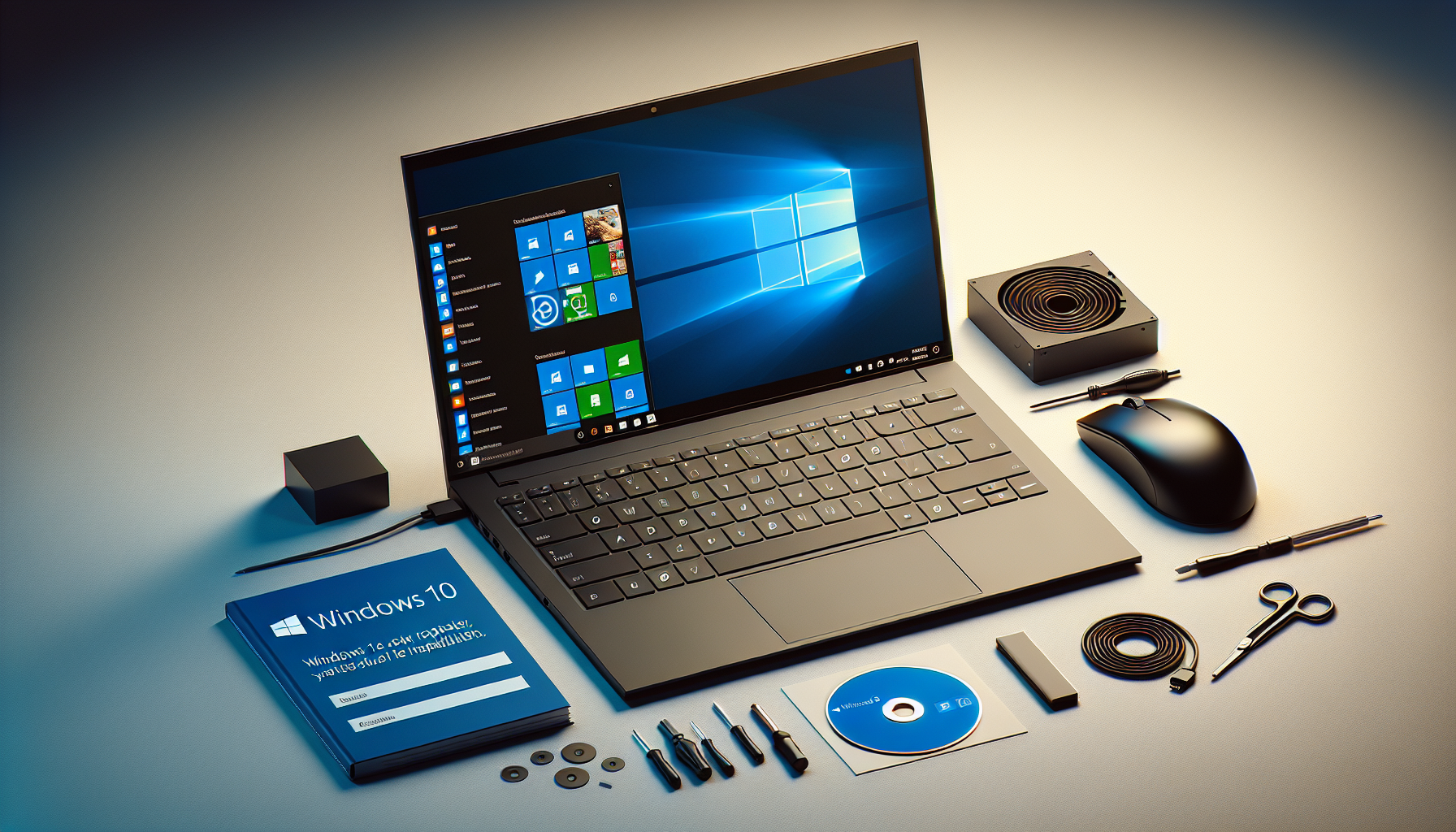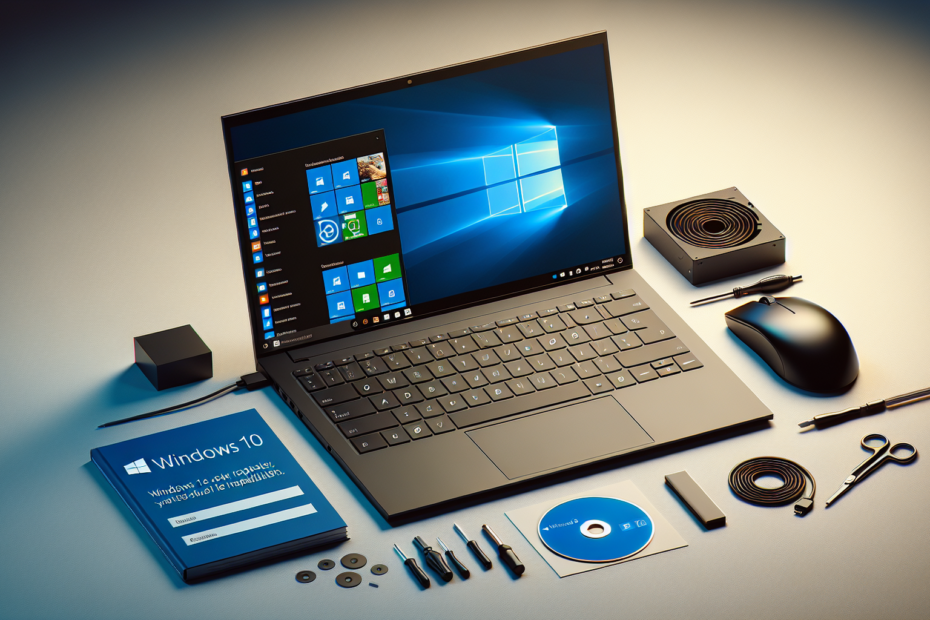







You’re in luck! If you’ve been wondering whether you can get Windows 10 on your laptop, the answer is a resounding yes! Windows 10 is available for installation on various laptop models, providing you with the latest and greatest features and updates. Whether you’re a student, professional, or just someone who loves to stay connected, having Windows 10 on your laptop can greatly enhance your computing experience. So, let’s explore how you can get Windows 10 up and running on your beloved laptop without any hassle.
What is Windows 10
Overview of Windows 10
Windows 10 is the latest operating system developed by Microsoft for personal computers, including laptops. It was released in July 2015 and has since become one of the most widely used operating systems in the world. Windows 10 aims to provide a user-friendly experience while offering new features and improved security compared to its predecessors.
Features of Windows 10
Windows 10 comes with a range of features designed to enhance the user experience. One of the notable features is the Start Menu, which combines the traditional Windows 7 Start Menu with Live Tiles from Windows 8, creating a seamless and customizable interface. It also introduces the virtual assistant, Cortana, which allows users to interact with their laptops using voice commands.
Windows 10 offers a revamped Microsoft Edge web browser that provides better performance, security, and compatibility with modern web technologies. Additionally, it includes the Windows Store, where users can download a variety of applications, games, and entertainment content.
The operating system also focuses on enhancing security by introducing features such as Windows Hello, which uses biometric authentication, and Windows Defender, a built-in antivirus program. Windows 10 also provides regular updates to address security vulnerabilities and improve performance.
System Requirements
Minimum hardware requirements
To run Windows 10 on your laptop, it is essential to ensure that it meets the minimum hardware requirements. These requirements include a 1 GHz or faster processor, at least 2 GB of RAM, and 20 GB of free storage space. The laptop should also have a DirectX 9 graphics card or later, and a 800×600 display resolution.
Recommended hardware requirements
While meeting the minimum hardware requirements allows Windows 10 to run, it is recommended to have a more capable laptop for optimal performance. Microsoft suggests a 2 GHz or faster processor, 4 GB of RAM or more, and 64 GB of storage space or higher. A DirectX 12 compatible graphics card and a display with at least 1280×720 resolution are also recommended.
Checking compatibility with your laptop
To ensure that your laptop is compatible with Windows 10, Microsoft provides a tool called the “Windows 10 Compatibility Checker.” This tool scans your system for any potential issues that may prevent a smooth installation or functionality of Windows 10. It is advisable to run this tool before proceeding with the upgrade or installation process.

Methods to Install Windows 10
Upgrade from an existing Windows version
If you are currently using a Windows operating system on your laptop, you have the option to upgrade to Windows 10. An upgrade preserves your files, settings, and applications while transitioning to the latest version of the operating system. This method is suitable for users who wish to keep their current data intact.
Clean installation of Windows 10
A clean installation involves formatting your laptop’s hard drive and installing Windows 10 from scratch. This method ensures a fresh start with a new operating system and eliminates any potential issues caused by previous installations or system files. A clean installation is recommended when upgrading from older Windows versions or when facing persistent performance problems.
Installing Windows 10 on a new laptop
For users who are purchasing a new laptop without an operating system preinstalled, installing Windows 10 is a straightforward process. This method requires creating installation media, such as a bootable USB drive, and following the installation steps provided by Microsoft. This option allows users to customize their laptop’s software environment from the beginning.
Upgrading from an Existing Windows Version
Checking compatibility of your current Windows version
Before upgrading to Windows 10, it is crucial to confirm that your current Windows version is supported. Microsoft provides a list of supported Windows versions for upgrading, ensuring a smooth transition. It is important to note that some older Windows versions may require additional steps before the upgrade can proceed.
Using the Windows Update utility
The easiest way to upgrade to Windows 10 is by using the built-in Windows Update utility. This utility scans your system for compatibility and provides a seamless upgrade process if all requirements are met. Users can access the Windows Update utility by navigating to “Settings”> “Update & Security”> “Windows Update” on their laptops.
Using the Windows 10 installation media
An alternative method for upgrading to Windows 10 is by using the installation media. This involves creating a bootable USB drive or DVD with the Windows 10 installation files and running the setup from within the current Windows version. This method allows users to perform a clean installation or upgrade multiple laptops without needing to re-download the installation files for each device.

Clean Installation of Windows 10
Backing up your important data
Before proceeding with a clean installation of Windows 10, it is essential to back up any important data on your laptop. This ensures that no data is lost during the formatting process. Users can back up their data to an external storage device, cloud storage, or using Windows’ built-in backup tools.
Creating installation media
To perform a clean installation of Windows 10, you will need to create installation media. This involves downloading the “Media Creation Tool” from the official Microsoft website and using it to create a bootable USB drive or DVD with the Windows 10 installation files. The media creation process is straightforward and provides step-by-step instructions.
Booting from the installation media
Once the installation media is created, you will need to restart your laptop and enter the BIOS or boot menu. This varies depending on the laptop’s manufacturer, but commonly requires pressing a specific key, such as F2 or Delete, during the startup process. From the BIOS or boot menu, select the installation media as the primary boot device.
Installing Windows 10
After successfully booting from the installation media, the Windows 10 installation process will begin. Follow the on-screen instructions to select the desired language, time zone, and keyboard layout. Then, choose the appropriate installation option (such as “Custom” for a clean installation). From here, you can format the hard drive and proceed with the installation process.
Activating Windows 10
After the installation is completed, you will need to activate your copy of Windows 10. Activation can be done by entering the product key provided during the purchase of Windows 10 or by using a digital license associated with your Microsoft account. Activation is crucial to access all features and receive future updates.
Installing Windows 10 on a New Laptop
Activating Windows 10 on a new laptop
When purchasing a new laptop without an operating system, Windows 10 will need to be activated after installation. The activation process is similar to that of a clean installation on an existing laptop. It requires either entering a product key or using a digital license associated with your Microsoft account.
Obtaining a valid Windows 10 license
To install and activate Windows 10 on a new laptop, you will need a valid license. Windows 10 licenses can be purchased from authorized retailers or directly from Microsoft’s website. Different versions of Windows 10, such as Home or Pro, offer varying features and price points. It is essential to choose the appropriate version based on your needs.
Creating installation media
Similar to installing on an existing laptop, creating installation media is required for installing Windows 10 on a new laptop. By following the steps mentioned earlier, you can create a bootable USB drive or DVD with the necessary installation files.
Booting from the installation media
To install Windows 10 on a new laptop, you need to boot from the installation media. Accessing the BIOS or boot menu during startup allows you to select the installation media as the primary boot device. From there, follow the on-screen instructions to begin the installation process.
Installing Windows 10
Once the installation process begins, choose your desired language, time zone, and keyboard layout. Select the appropriate installation option, such as “Custom,” to configure your new laptop’s software environment. Follow the prompts to format the hard drive and proceed with the installation.
Activating Windows 10
After the installation is complete, activate your copy of Windows 10 using the product key provided with your license or by using a digital license associated with your Microsoft account. Activating Windows 10 allows you to access all features and receive future updates.
Benefits of Upgrading to Windows 10
Improved user interface and features
Windows 10 offers an enhanced user interface that combines the best elements of previous Windows versions. The Start Menu provides a familiar and customizable interface, while the addition of Live Tiles allows for quick access to information and applications. Windows 10 also introduces various productivity features, such as virtual desktops, Task View, and improved multitasking capabilities.
Enhanced security features
With the ever-increasing importance of cybersecurity, Windows 10 focuses on providing enhanced security features. Windows Hello offers biometric authentication options, including facial recognition and fingerprint scanning, for a more secure login experience. Windows Defender, the built-in antivirus program, provides real-time protection against malware and other threats.
Access to the Windows Store
Windows 10 introduces the Windows Store, where users can access a wide range of applications, games, and entertainment content. The Windows Store provides a curated and secure platform for downloading software, ensuring compatibility and safety.
Compatibility with software and hardware
Windows 10 aims to be compatible with both older and newer software and hardware. Microsoft has made efforts to ensure that applications and drivers from previous Windows versions can run on Windows 10. This compatibility allows users to transition seamlessly to Windows 10 without worrying about losing access to their preferred software or facing issues with their existing hardware.
Common Issues and Troubleshooting
Compatibility issues with specific laptop models
While Windows 10 strives for compatibility with a wide range of laptop models, it is possible to encounter compatibility issues, particularly with older or less common models. In such cases, it might be necessary to search for updated drivers or contact the laptop manufacturer’s support for assistance. Microsoft’s Windows 10 Compatibility Checker tool can help identify any potential compatibility issues before installation.
Driver incompatibility
Sometimes, certain hardware devices on a laptop may not have compatible drivers available for Windows 10. This can result in malfunctions or limited functionality of those devices. To resolve this issue, it is recommended to visit the laptop manufacturer’s website and download the latest drivers specifically designed for Windows 10.
Installation errors and troubleshooting steps
During the installation process, some users may encounter errors or issues that prevent the successful installation of Windows 10. Possible solutions include ensuring that the laptop meets the system requirements, checking for any conflicting software or hardware, running installation troubleshooters, or performing a clean installation instead. Microsoft’s support website provides detailed troubleshooting steps for common installation errors.
Alternative Operating Systems
Consideration of alternative operating systems
While Windows 10 is a popular choice for laptops, it is worth considering alternative operating systems based on your specific needs and preferences. Operating systems like macOS and Linux offer different features, user experiences, and security models. Assessing your requirements and exploring alternative operating systems can help you make an informed decision.
Comparison of Windows 10 with other operating systems
When comparing Windows 10 with other operating systems, it is essential to consider factors such as software compatibility, user interface, availability of applications, and hardware support. Windows 10 excels in compatibility with a vast range of software and offers a user-friendly experience. macOS provides a seamless integration with Apple devices and a curated ecosystem, while Linux offers flexibility and customization options.
Installation and usage of alternative operating systems
Installing and using alternative operating systems can vary depending on the specific system requirements of each OS. For macOS, it is limited to Apple devices, and installation instructions can be found on Apple’s official website. Linux distributions provide different installation methods, such as creating bootable USB drives or CDs, and offer extensive documentation and community forums for support.
Conclusion
Windows 10 as a viable choice for laptops
Windows 10 is a highly recommended operating system for laptops due to its extensive compatibility, user-friendly interface, and enhanced security features. It provides a familiar environment for users transitioning from previous Windows versions while introducing new and improved features.
Considerations before installing Windows 10
Before installing Windows 10, it is crucial to check your laptop’s hardware compatibility, backup important data, and identify any potential issues that may arise during the installation process. Running the Windows 10 Compatibility Checker and ensuring the availability of updated drivers can greatly aid in a smooth installation.
Final thoughts
With its wide range of features, improved security, and ease of use, Windows 10 offers an excellent choice for laptop users. Whether you are upgrading from an existing Windows version, performing a clean installation, or installing on a new laptop, following the recommended steps and considering alternative operating systems can help you make the most informed decision for your needs.





